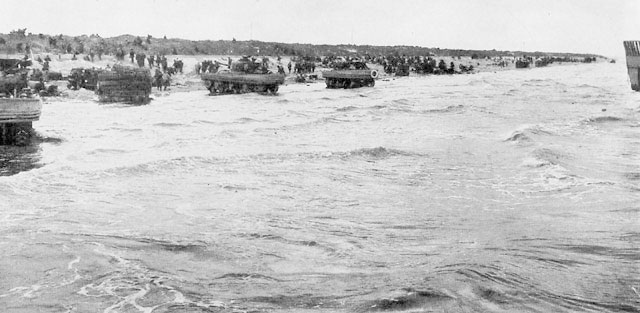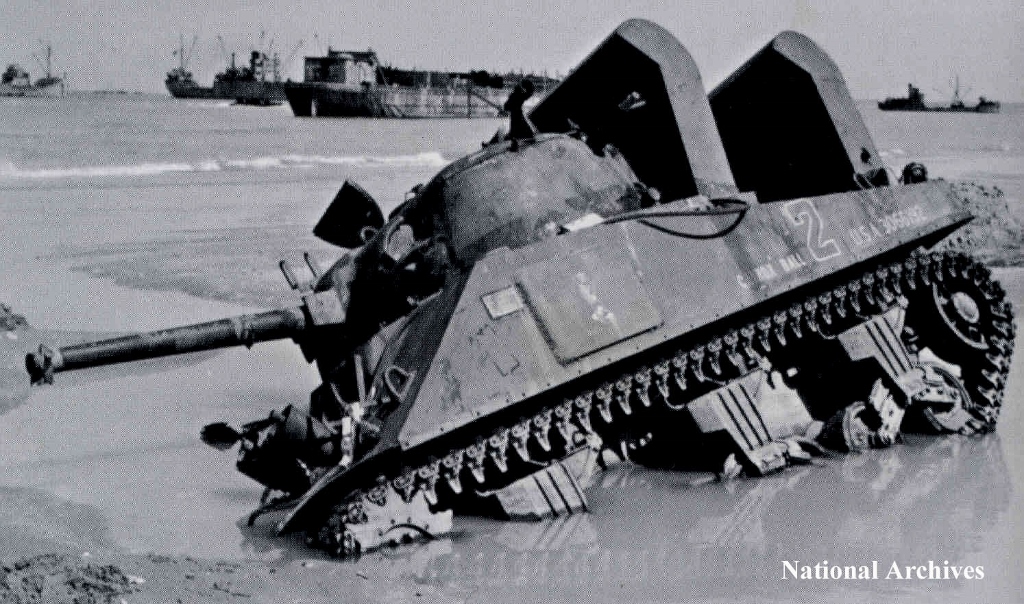At Omaha Beach, yes. The seas were choppier there, and a cowardly Navy ship commander had the tanks sent out from far enough back that he and his ship would be in less danger.
At Utah it was VERY different: the 70th Armored battalion was attached to the 8th Infantry Regiment of the 4th Infantry Division, and most of their DD swimming Shermans made it- some were lost, but not all, and the 70th Armor hit the wrong beach right alongside the troops who'd come to shore in the wrong place. Even better: among the first 70th Armored tanks ashore were their C Company bulldozer tanks, who set to burying German mortar and machinegun positions under tons of sand, saving their bog and coax machinegun and main gun ammo for more interesting targets...like antitank gun positions. The 70th's A Compant lost four Shermans when their LCT hit a mine, but B and C Companies were essentially intact. The battalion's D Company, equipped with highspeed M5 light tanks, didn't land until H-Hour + 260 hours; their mission was to hook up with the undersupplied 101 Airborne's paratroopers and resupply and reinforce- not *relieve* or *rescue* them. On D-Day+2 the medium tank companies assisted the 8th Infantry Regiment consolidated the beachhead by clearing the pockets of German resistance in and around Ste. Mère Église and linked up with the 82nd Airborne Division; this is the part of the reason the 70th is the most decorated tank battalion in the US Army, and has sometimes been unofficially refereed to as the 70th Armored Battalion [Airborne].
Additionally: direct naval gun support was better at Utah, two destroyers nearly grounding their vessels in order to get in close and dump 5-inch [122mm] direct fire into the German positions.
70th Armor's DD Shermans going ashore at Utah Beach, 06 June 1944. Not quite all of them made it.

